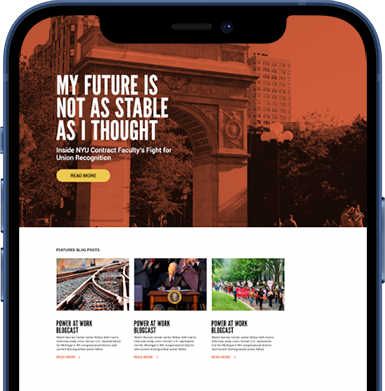In 2021, 5,190 workers in the United States suffered fatal work injuries, according to the Bureau of Labor Statistics. Five thousand one hundred and ninety workers who left for work at the start of their day and didn’t return home --- to their families, communities, friends, partners.
We will never know the extent of the personal and economic losses in each case. Children who lost parents. Partners who lost the loves of their life. Families without breadwinners. Empty seats at the holiday dinner table. Until their stories are told, we will only know the total number. And for too many, their stories will never be shared beyond those closest to them.
The workplace injury death toll in 2021 marked an 8.9% increase from 2020 and the rate of fatal injuries --- that is, the number of injuries per 100,000 full-time equivalent workers --- was higher than both 2019 and 2020. It might be tempting to discount the increase as a result of the rapid return to economic growth after the COVID-19 pandemic recession, but that explanation does not hold. Gross domestic product declined in the fourth quarter of 2019 even before the pandemic began and dropped off a cliff in the next quarter as public health officials and employers shut down face-to-face commerce across the country. Yet, inflation-adjusted GDP grew most rapidly in the latter half of 2020. The economy’s growth in 2021 was not as rapid. If fast economic growth kills workers, the comparisons between 2020 and 2021, and 2019 and 2021, would have looked very different.
The data strongly suggest that a very large portion of these fatalities were readily preventable if employers protected against well-known or easily foreseeable hazards, For the fifth consecutive year, transportation incidents dwarfed other causes of workplace fatalities. Deaths of drivers/sales workers and truck drivers increased more than 16%. It’s reasonable to assume that just-in-time delivery schemes contributed to these high and rising numbers. Worker fatalities caused by workplace violence and other intentional injuries by people --- largely gun violence --- increased substantially. Falls, slips, and trips killed 850 workers in 2021, an increase from 2020, led by construction and extraction occupations. None of these hazards are exotic, new, or surprising for employers in those industries. They are most notable for their predictability and ordinariness.
The tragedy is not evenly distributed. Both black and Latino workers had a fatality rate that was greater than the all-worker rate. Ten times as many men were killed as women. Unfortunately, BLS does not tell us whether workers in union-represented workplaces faced a lesser risk of fata injury than non-union workers.
Unions in hazardous industries typically employ safety and health professionals and collectively bargained provisions that address workplace safety and health to protect their members, sometimes along with labor-management safety committees. Increased enforcement and regulation by OSHA, MSHA, the Transportation Department, and their state counterparts would help to improve these disgraceful numbers. But government enforcers can’t be everywhere, even in dangerous industries. Employers bear the obligation to provide safe and healthy workplaces and working conditions. Workers need the power to force them to satisfy that obligation.

